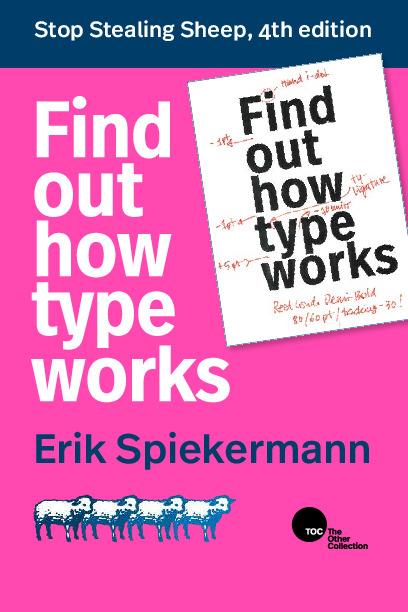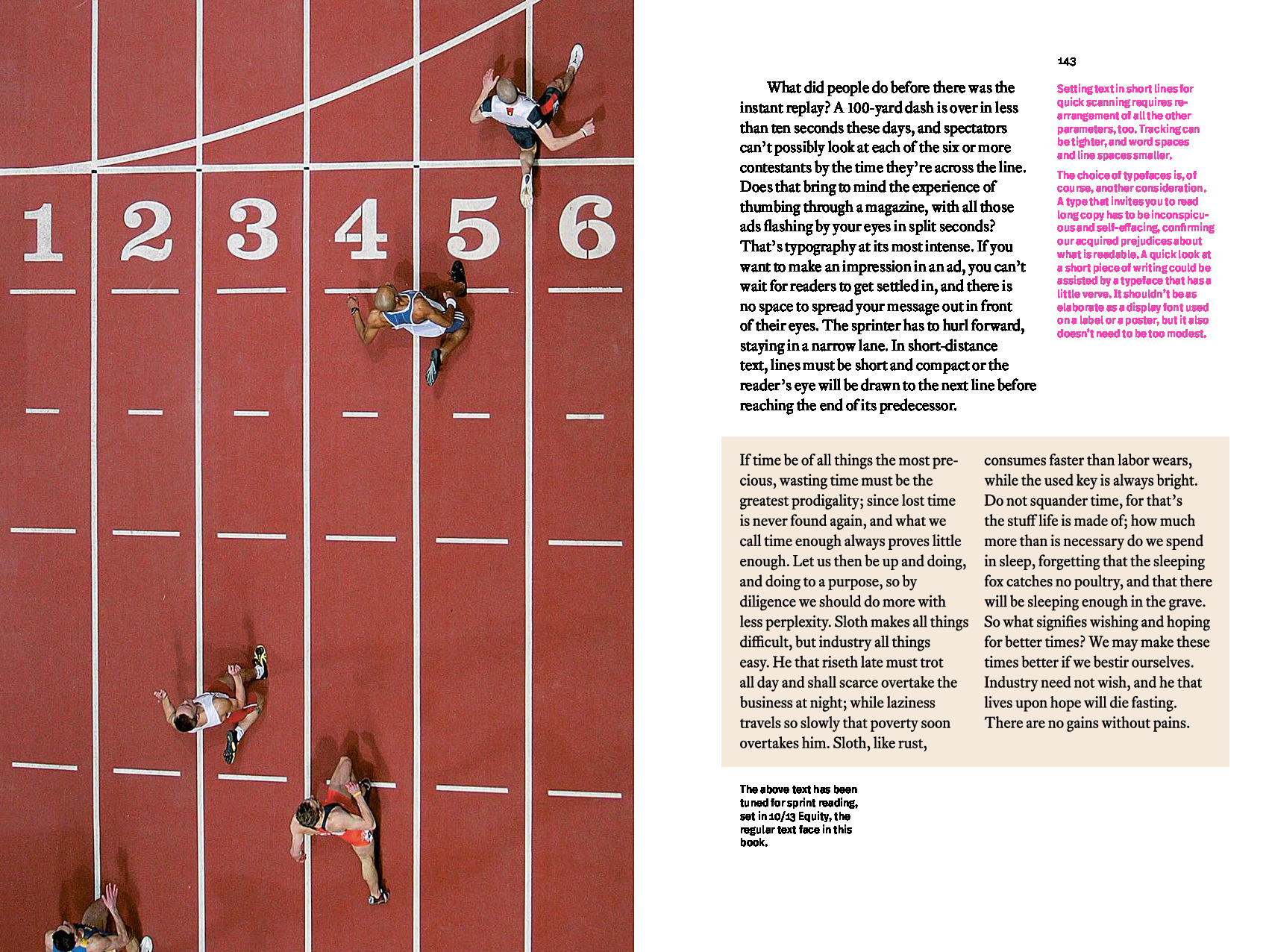
Erik Spiekermann, Stop Stealing Sheep & Find out how type works, 4th edition. The Other Collection, 2022, 231 pp., softcover, ISBN 978-3-949164-03-3. Available from https://fonts.google.com/knowledge/ stop_stealing_sheep.pdf at no cost.

From the start, TeX was designed to set type well. Stop Stealing Sheep is a book that explains why that matters. First published in 1993, the book is hardly new. What is new is that the author, Erik Spiekermann, with the help of Google Fonts, has made the book available under a Creative Commons licence, CC BY-ND 4.0 (https://creativecommons.org/licenses/by-nd/4.0).
Spiekermann has written a delightful, readable guide to the world of type. He shows us what type is, how it works, how it makes us feel and how we might choose it for different situations. He explains different varieties of type and how they interact. He shows us how type works at different sizes with tracking, kerning, spacing between words and lines, grids, and the layout of the page. And he builds all of this into a book that more than anything else illuminates his concepts. The left page of each pair is a full-page image that illustrates some concept on the right. And these text pages are filled, but not cluttered, with sidebars, illustrations and marginal notes, all exemplifying how type can be used well. The chapters are short and can be read independently, which makes the book one you can browse or dip into whenever you like.
The book’s terse, lively style means that it is not a detailed guide on how to choose typefaces (or fonts) or how to decide on such things as column width, line spacing and page layout. For these, I would suggest the book by Williams [1] for a more gentle introduction, or Bringhurst [2] for a comprehensive treatise. But this doesn’t mean you won’t find much helpful material in the present book.
First, it is worth reading because it helps you understand the value of many of the design choices of TeX. Compared to most word processors, TeX and its variants make it difficult to change typeface whenever you like. Although you can do more than this, the easy option is to choose a package giving you a set of families of typefaces to be used together: one roman, one sans serif and one monospaced. And you don’t easily change type sizes arbitrarily. You can use boldface or italics, but underlining is not so easy. On the other hand TeX has hyphenation switched on by default, and goes to great lengths to get it correct, while word processors usually have it switched off and hyphenate more crudely. TeX also uses different spacing between words depending on whether they end sentences or not (by default), produces ligatures by default and allows fine control over spacing and kerning. Spiekermann explains why these and other design choices matter and illustrates how they work to produce more readable, legible and beautiful type.
Second, if you don’t want or need detailed type information, Stop Stealing Sheep gives you some sensible ideas about the choices you still might make. When should you use \raggedright or flushleft? Is it a good idea or not to put lines in a table? When should you indent paragraphs or put space between them? When is it better to use two columns rather than one? And why is all caps not usually a good idea?
While it introduces you to sensible design choices, Stop Stealing Sheep is not a book about TeX or any of its variants. Indeed, it mentions neither these nor any composition software, but notes in passing a few other programs such as Adobe Illustrator. So, if you wish to apply the ideas, you will need to look to other sources such as [3] or the various online guides. To use colors (Chapter 3) you might investigate the color or xcolor packages. The fontspec package is helpful for font selection with OpenType (Chapter 6), while the geometry package will help design the page layout (Chapter 8) and textpos is a possibility if you want a detailed grid layout (also Chapter 8).
You may also investigate the unicode-math package if you want to use OpenType with mathematics. But, to be clear, Stop Stealing Sheep is not a book about typesetting mathematics. Indeed, it mentions nothing about mathematics beyond illustrating the various possibilities for setting figures—tabular and proportional, lining and oldstyle. But even here it should be useful if you produce tables of numbers or more readable equations.
In summary, then, while this is not a book about TeX, it is one that I would recommend to anyone who uses TeX.
First, it is an excellent introduction to what type is, how it works and how it can be used. The fourth edition covers many of the features of OpenType, which is becoming the standard for any application that uses type. Whether you want to use OpenType or just use type well, Stop Stealing Sheep has much to offer, without excessive technical detail.
Second, TeX remains ahead of any current word processor in its ability to make the features of type available. Stop Stealing Sheep will give you a good idea of what these features are. While most are already available in TeX or its derivatives (though many are frustratingly absent in word processors), it is likely that they will become even more widely available in future. So, it makes sense to learn what these features are and why you might want to use them.
Finally, while the printed book is certainly good value for money, the online version is, undeniably, unbeatable value for money.
[1] Robin Williams, The Non-Designer’s Type Book, 2nd edition, Peachpit Press, 2006.
[2] Robert Bringhurst, The Elements of Typographic Style, Version 4.3, Hartley & Marks, 2013.
[3] Frank Mittelbach with Ulrike Fischer, The LaTeX Companion, 3rd edition, Part 1, Addison Wesley, 2023.